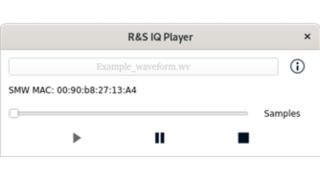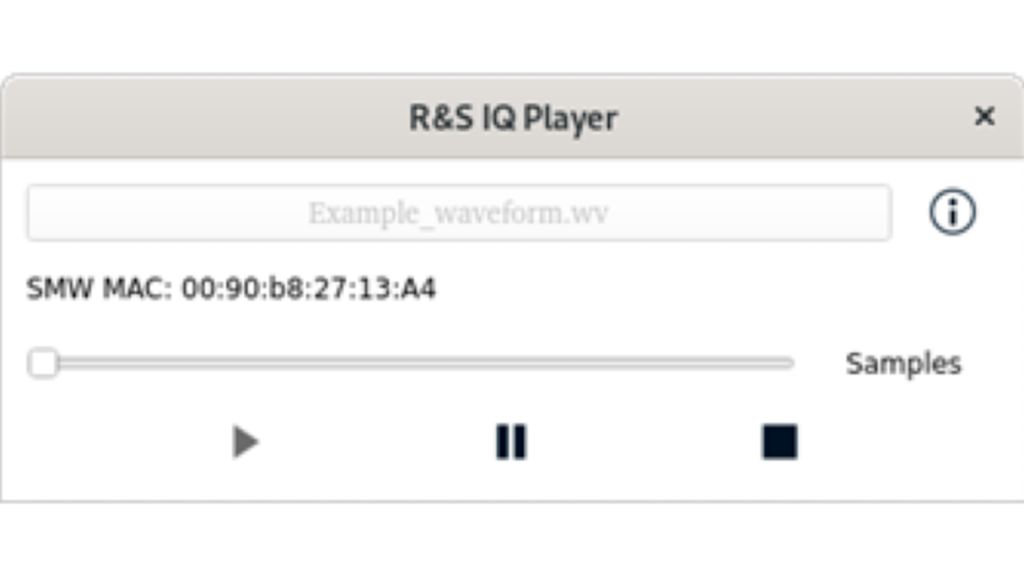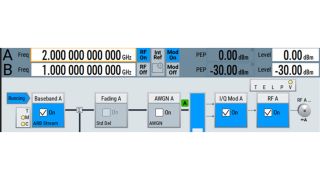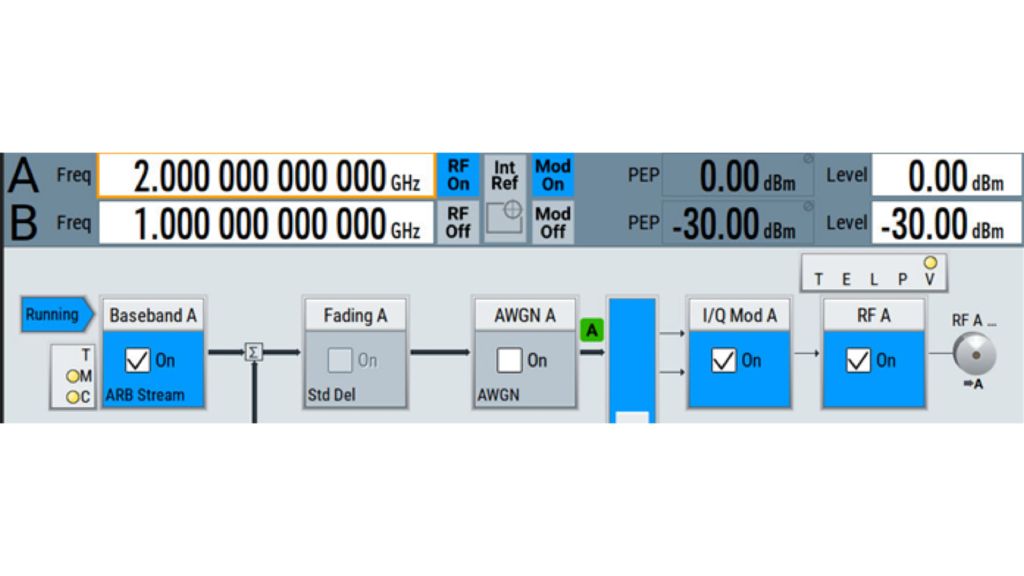Rohde & Schwarz solution
The R&S®SMW-K508 and R&S®SMM-K508 software options allow large waveform files or recordings of realistic signals to be streamed from a PC to an R&S®SMW200A or R&S®SMM100A vector signal generator with user-friendly R&S®I/Q player PC software.
After setting up and configuring a PC and signal generator, users can open the R&S®I/Q player, select one of their waveform files and start streaming. The I/Q data is transmitted directly from the software to the PC network card for optimum data transfer rates.
An optical cable connects the network card to the vector signal generator and transfers the I/Q data. The generator modulates the I/Q signal to the set RF frequency and the resulting signal is available at the RF output.
As an alternative to the R&S®I/Q player, users can develop their own streaming application using the API, which comes as a C++ library. The library must be linked to the custom software project and the predefined interface implemented to provide I/Q data to the library.
The maximum RF modulation bandwidth achievable with the R&S®SMW-K508 or R&S®SMM-K508 option is 800 MHz at 1 Gsample/s sample rate, dependent on the PC performance and setup.
The I/Q data is buffered inside the generator for a continuous signal flow. The R&S®SMW-K556 customized digital input option that uses a Rohde & Schwarz proprietary protocol is a good candidate for latency-sensitive applications.









